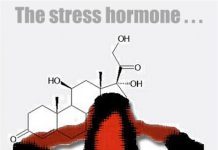Chemotherapy drugs are the foremost step to treating most types of cancers. Do you know the different types, side effects, when to use, and which cancer shows the best result? Here is everything you need to know.
What Is Chemotherapy?
Chemotherapy drugs are introduced to a patient’s immune system to kill or prevent carcinogenic cells from spreading. Chemo drugs can be used as a primary treatment or a supportive treatment post-surgery, amputation, or recovery. Oncologists usually prescribe different types of chemo depending on the individual’s overall health, immune strength, and advancement of cancer.
Chemotherapy may last anywhere from three to six months. The common alternatives to chemo are surgery, targeted therapy, immunotherapy, constant surveillance, and care.
What are the Types of Chemotherapy Drugs?
The aggressiveness of cancer, age, overall health, and pre-existing conditions are crucial factors for deciding on a specific type and duration of chemo.
Alkylating Agents
These were the very first chemo drugs that were invented and still in use. The risk of cancer generally increases with age, habits, and genes. Carcinogenic cells can cause significant gene mutations pushing the entire body’s DNA haywire.
Alkylating agents are highly efficient because they can be used at any time regardless of the stage. They cause disruption in a cancer cell structure using an ingredient called alkyls. Thus, the cancer cells will be prohibited from growing or multiplying. These agents are practical if the cancer is progressing at a slower rate. They are typically used to treat:
- Blood cancer
- Lung cancer
- Breast cancer
Antimetabolites
A mature cell gets ready to copy itself to divide into another cell with the same DNA characteristics. Antimetabolites come in handy during the division stage. They attach themselves to the DNA of an unfurled cell that is on the verge of division. The presence of these antimetabolites makes any new cancerous cells impotent. 5-fluorouracil, methotrexate, and capecitabine are a few popular chemo drugs. They are highly beneficial for treating:
- Breast and ovarian cancer
- Lymphoma
- Leukemia
- Intestinal cancer
Antitumor Antibiotics
Lumps of dead cells that have grown abnormally form a tumor. These tumors have a specific DNA structure different from the usual DNA thread. Antitumor antibiotics are customized antibiotics that prevent cancerous tumors from growing. These chemo drugs function during the cell division stage by obstructing the transfer of carcinogenic RNA from abnormal to normal cells. Doxorubicin, mitoxantrone, and bleomycin are common drugs available on the market. They are primarily used to treat:
- Ovarian and prostate cancer
- Lung cancer
- Colorectal cancer
Plant Alkaloids
Chemotherapy drugs derived naturally from plants are known as plant alkaloids. There are two major types of these drugs majorly used for treating lung, breast, and blood cancer.
Mitotic Inhibitors
During mitosis, a single cell divides to create various cells that resemble the parent cell. These inhibitors identify carcinogenic cells in the mitotic stage to prevent them from dividing. Docetaxel and paclitaxel are common mitotic inhibitors.
Topoisomerase Inhibitors
Most topoisomerase inhibitors are derived from synthetic matter. Vincristine, etoposide, and topotecan are common plant-based inhibitors. They terminate the formation of double helix structures in cancerous cells by disturbing the topoisomerase enzyme. A DNA structure is complete only when the two strands have met each other to form a twist structure. These inhibitors prevent the cancer cells from completing.
Side Effects of Chemotherapy Drugs
There is no drug without a side effect. Short-term or long-term usage of any drug, potentially powerful or not, will always result in a reversible or irreversible side effect. Here are the common side effects of chemotherapy:
- Infections due to weakened immunity
- Fatigue and lethargy
- Appetite and hair loss
- Weight loss or gain
- Mouth soreness, bruising and bleeding
It is advised to opt for chemo or its alternatives only after professional consultation.

















